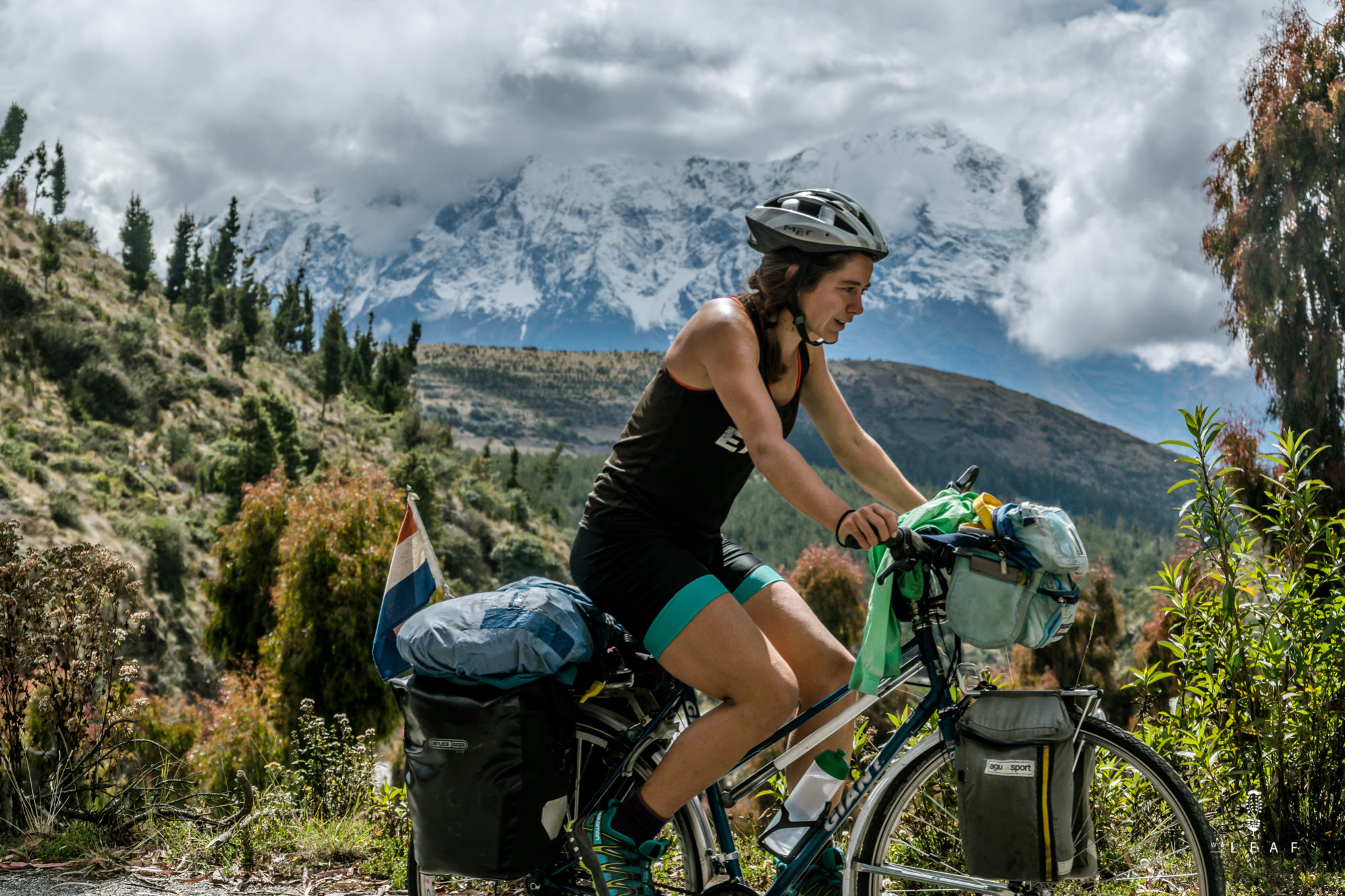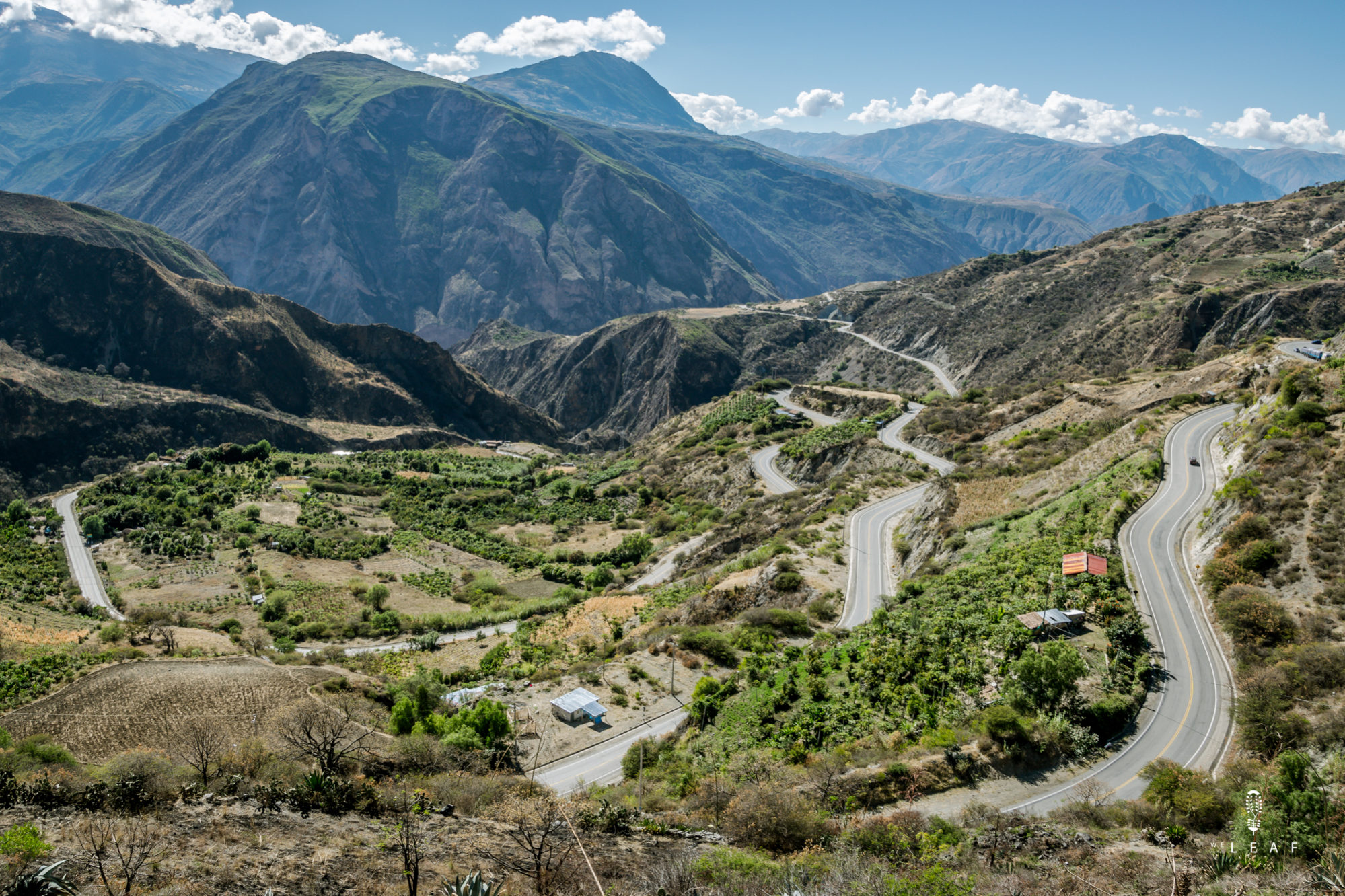
Life on the mountainside

Hiking in the Colca Canyon
July 23, 2018
Our five habits on the bicycle
August 6, 2018
Sunday 15th of juli - Rio Berbejo
'Stop!' shouts Olivier, but it is already to late. The chain jumps from the outer gear and compresses between the spokes. We have just arrived at the paved road after a short cut on a bumpy dirt road. We put the bikes on the side of the road and three seconds later they are there, hundreds of biting flies circling around our bodies and throwing themselves on our legs and arms. These mosquitos live under the altitude of 2,500 meters in the dry season. It makes cycling stressful and there is no other option than to continue climbing until we are high enough. A quarter of an hour later and a lot of biting further, the chain is back on its normal place and we continue climbing the mountain flank.
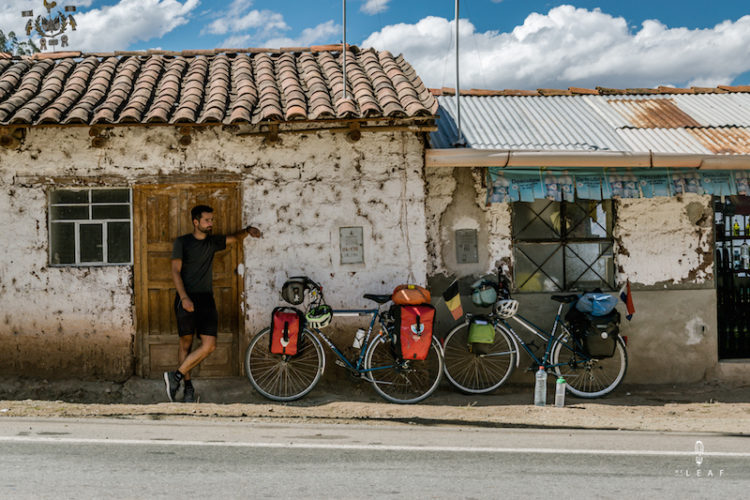
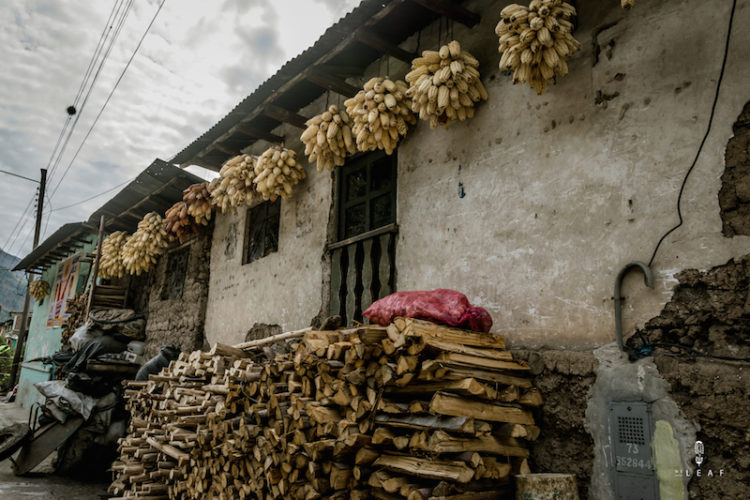
A few days ago we left Cusco, on our way to the north. We cycle through the Andes and have to battle climbs and descend of 60 kilometers. Sometimes we are climbing for a whole day and in the evening we only have forty kilometers on the odometer. Yet it is not boring for a moment because the mountain flanks in Peru are buzzing with life. At the bottom of the valley there is a tropical climate with palm trees, banana plantations and endless fruit stalls with avocados and crazy fruit that we do not know in Europe. Old women and men with shiny gold and silver teeth are waving to us. They trudge the mountain with large bales of sugar cane on the back and it seems as if they will drop through their slender knees at any moment. The biting flies don’t bother them anymore. 'We are used to it' says one of the women when hundreds of flies are circling around her head, like a cow in a dirty stable. 'A man can get used to everything', Olivier shakes his head in disbelief.
Mango ice cream is on all sings as we climb further up, but how tempting it sounds, we do not want to stop and be eaten as a piece of fruit ourselves. We cycle past adobe houses with wooden balconies of which all walls are painted with the names of the candidate mayors. Each candidate has his own logo, one a football, the other a water drop or a shovel. The clothes on the clothesline betraye whether the houses are inhabited and even in the most dilapidated houses is sometimes a sign of life. In front of the house, old women separate the sand from the grain and the quinoa, they do the laundry or weave intricate cloths. Sometimes we can squeak inside one of the houses and see big heaps of corn and potatoes that fill the entire living space. There are hardly any bite flies here and it cools down at night. The small children have a beautiful red glos on the cheeks and stare at us with dark black eyes.
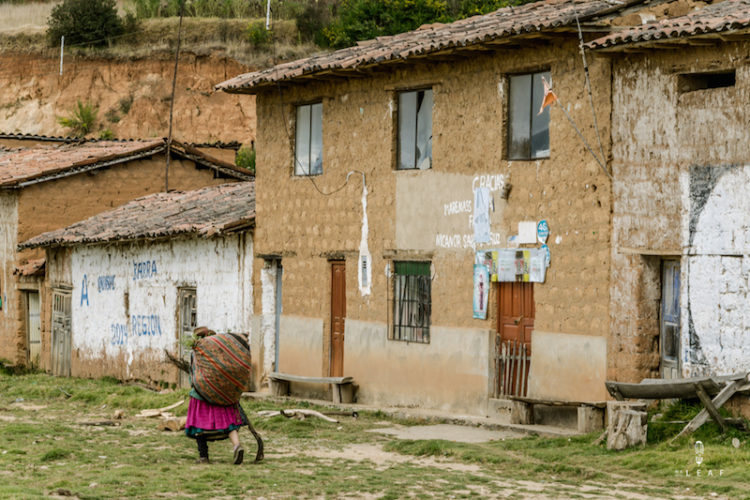
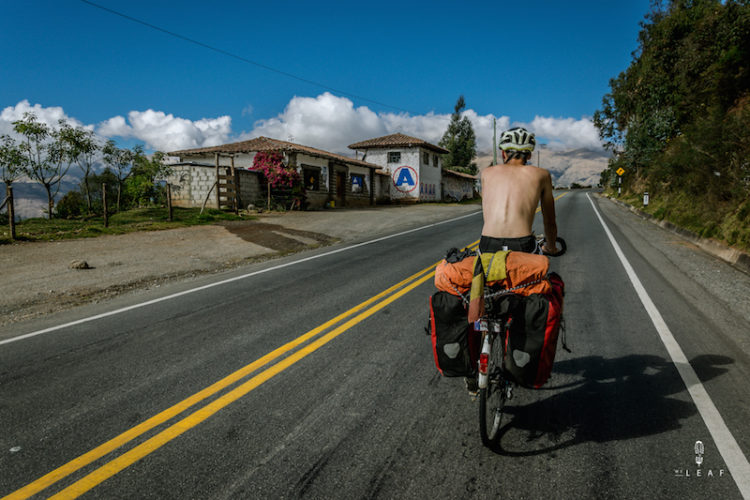
The higher we come, the less life there is. Above 3,000 meters we suddenly see everywhere blackened pans under a simple tent. Pork and potatoes simmer in the pans for the hungry truck drivers who pass by. A simple table with four plastic garden chairs complete the restaurant. The mountain water flows down into the wide gutters next to the road. Cars stand still in the middle of the road while people take all the time to wash the car. A little further away are large bags of potatoes in the gutter to wash off the sand. The potatoes are then dried over 4,000 meters in the sun so that they burn and shrink naturally. Even mattresses are washed in the gutter and people are stepping on it to get the dirt out. Between the houses are the chickens and cows, while the pigs regularly cross the street, followed by an old female with a bowler hat who tries to get them back to the right side with a wooden stick and a hissing sound. Drunken men want to shake hands with us and offer us a glass of beer, while his friend beside it is carelessly peeing with his business in full gloria.
If we climb further, we have to stop for a while because on the mountain slope some inhabitants cut down a few trees. The felled trees crash into the roadway and the cars can drive past them, zigzagging around them. With a loud scream a woman warns that two cyclists pass by. We cycle quickly pass and when we are around the bend, there is another tree trunk in the middle of the road. However, the biggest danger is the driving style of the Peruvians. Without thinking, they overtake other cars and trucks on the winding roads. They prefer to drive in a straight line and are more on the wrong side of the road than the right ones. More than once, we are scared to death when another car rushes straight at us through the inside bend. They horn loudly to warn us, as if we were cycling on the wrong side. They get to learn that honking on the driving lessons, if they already exist in Peru, because every car, truck or motorbike needs to honk repeatedly as they pass us by.
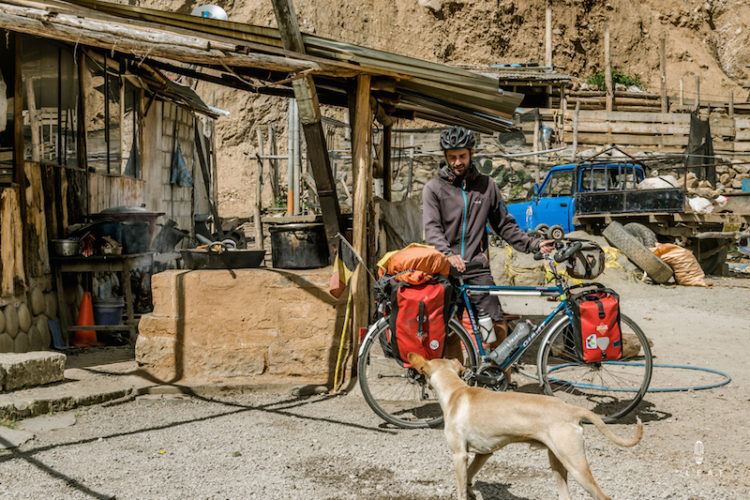
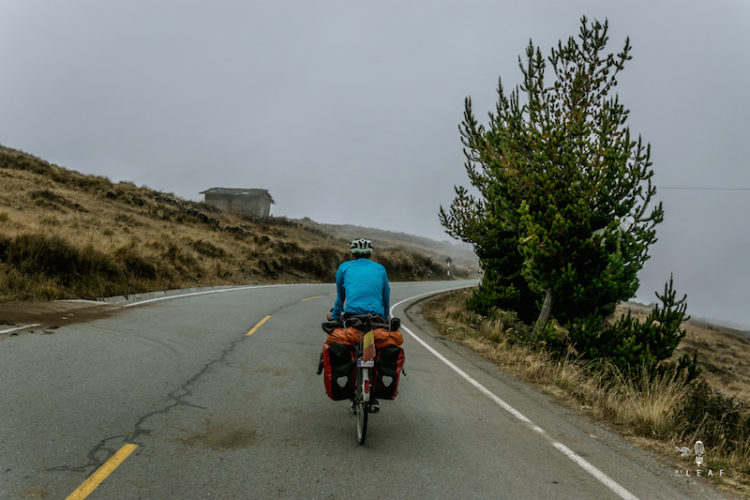
After infinite climbing, the curious moment suddenly follows when you realize that you are high and everything in the valley has changed to miniature level. Then we realize how far we have climbed. There isn’t much life at this level altitude, only a rough and brown landscape remains. Yet we see over 4,000 meters people on the fields with large bags full of potatoes. It is harvest time and everything is hand-cleared. With whole families they work on one field, while one of the women cooks the food along the field. The last meters we are between the clouds and see the mountain pass in the distance, after which we dive back down sixty kilometers. The film of life on the mountainside now takes place in the opposite direction, after which we end up between the biting flies and quickly climb to a safe height again.
